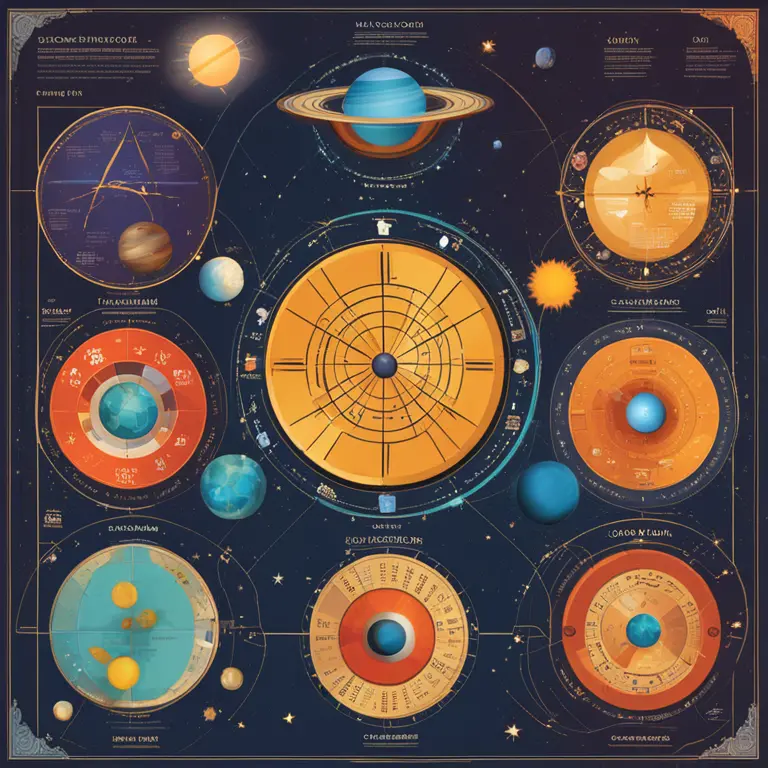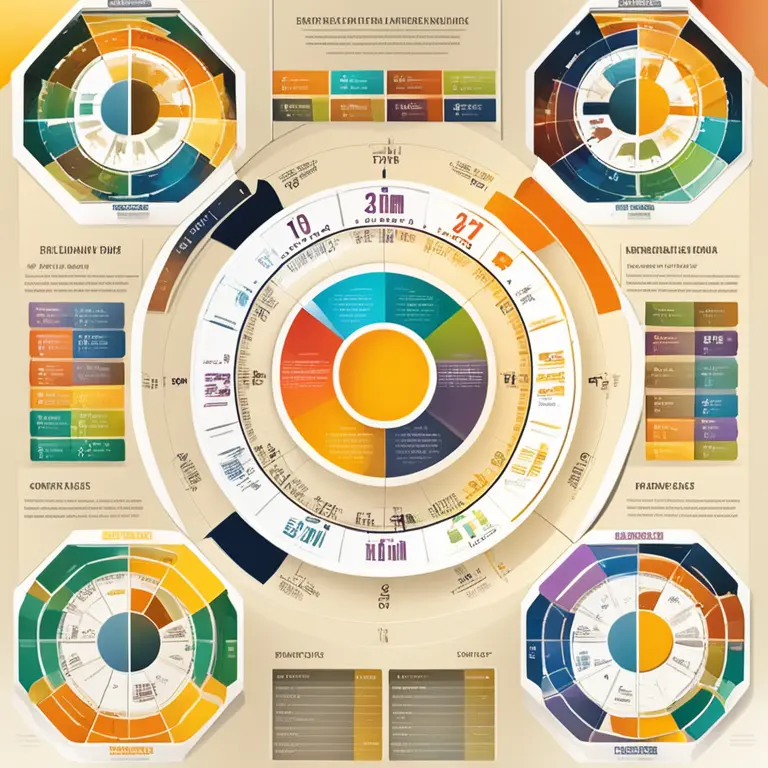
The Fundamentals of Astrology: A Beginner's Guide
Delve into the basic principles of astrology to understand your zodiac signs, planets, and celestial influence on your life.
article by Priya Deshmukh
Introduction to Astrology
Astrology is an ancient practice that examines the positions and movements of celestial bodies to deduce their potential influence on human affairs. Rooted in the belief that the alignment of stars and planets affects individual personalities and events, astrology serves as a cosmic guide for many. With its origins tracing back to Babylonia, it has evolved over millennia, integrating into various cultures and civilizations. This introductory guide aims to navigate the celestial language of astrology, offering clarity on its foundational elements for novices and enthusiasts alike.

Zodiac Signs and Birth Charts
The 12 zodiac signs, which form a belt around the earth, are central to astrology. Each sign correlates to a specific time frame in the year and is believed to impart distinctive characteristics to individuals born under it. A birth chart, also known as a natal chart, is a map of where all the planetary bodies were positioned at your exact moment of birth. Interpreting this chart is a complex process, where astrologers look at the signs, houses, and aspects to predict personality traits and life events.

Planetary Influences
In astrology, planets play a crucial role in shaping our experiences. Each of the Sun, Moon, Mercury, Venus, Mars, Jupiter, Saturn, Uranus, Neptune, and Pluto (considered a planet for astrological purposes) governs specific aspects of our lives—from our emotions and intellect to our desires and growth. The Sun sign, often known as one's star sign, dictates one's core identity, while the Moon sign influences emotions and inner mood.

Houses and their Meaning
The 12 houses in astrology represent different areas of life, varying from personal identity to community and beyond. The houses in your birth chart are determined by the time and place of your birth and differ individually. The first house starts with the Ascendant or rising sign, reflecting personal identity, while subsequent houses cover aspects such as values, communication, home life, creativity, health, and more. The positioning of planets within these houses during your birthtime reveals further nuances about your life path.

Aspects and Alignments
Aspects are angles created by the planets in relation to one another, influencing how their energies combine and play out in our birth charts. Conjunctions, sextiles, squares, trines, and oppositions are primary aspect types, each bearing distinct implications. For example, squares can indicate challenges and growth opportunities, whereas trines suggest harmony and ease. Understanding these relationships can be key to deciphering astrological predictions.
Transits and Progressions
Astrology is not static; it involves the constant movement of planets, known as transits, which form aspects with the positions in one’s birth chart. These transits can signal changes and developments in a person's life. Similarly, progressions involve a method of moving each planet forward in the chart, symbolic of one's growth over time. Predictive astrology uses both of these techniques to analyze future trends and possibilities.
Modern Relevance of Astrology
Despite the scientific community’s skepticism, astrology continues to thrive in modern culture. It offers individuals a framework for self-understanding and decision-making, while also fostering a greater connection with the cosmos. With more access to customized astrological reports and interactive tools, today's astrology adapts to the digital age, personalizing the ancient wisdom for contemporary seekers exploring life's mysteries.
Published: 2/5/2024
Modified: 2/5/2024
More predictions
Come back here soon to learn more about yourself and your future


The Zodiac Signs and their Influence
Delve into the intricate world of zodiac signs, where celestial alignments offer insights into personality traits, future forecasts, and life paths.


Zodiac Signs: Dates and Meanings
A concise guide detailing the dates and fundamental characteristics of the twelve zodiac signs.


From Zodiac Signs to Tarot Cards: A Celestial Guide
Connect the cosmic dots between your zodiac sign and the tarot with this insightful guide into the esoteric relationship of astrology and tarot card readings.